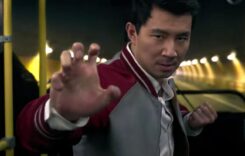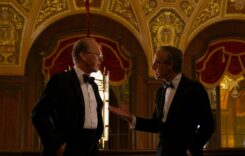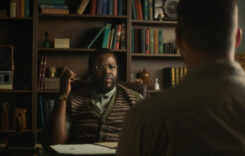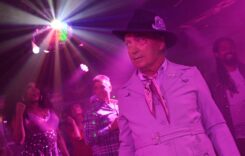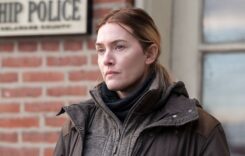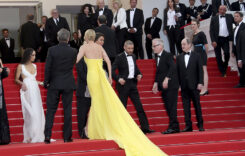OCTOBER 16, 2018
Spam in a can.
That was the famous four-word description of the Mercury astronauts by legendary pilot Chuck Yeager, and you can definitely feel the truth of that during the first five minutes of Damien Chazelle’s latest film, “First Man.”
You are in the inside of an aircraft all alone. The only spoken voices are occasional bursts on the radio from Mission Control. Instead, your body shakes from the vibration of what seems at times to be a rickety capsule and your eardrums are on the verge of bursting from the deafening sounds of metal that seem to suggest that the capsule’s bolts are about to pop, causing your vehicle to disintegrate.
This was the terrifying experience that space flyers (not yet astronauts) had to face in the early days of the space program, one which the movies have never told but one which is one of the most effective elements of director Damien Chazelle’s latest film “First Man.”
The film reunites Chazelle, who won an Oscar for directing “La La Land,” with that film’s co-star Ryan Gosling, who earned a Best Actor nomination for his performance. Here Gosling plays Neil Armstrong, the first man ever to walk on the moon. But if you’re going to the film just to see Armstrong take that momentous walk, that first step doesn’t come until two hours into “First Man.” What precedes it, however, is in many ways the more important parts of the movie.
The events of “First Man” are told on two tracks. The first deals with the eight-year struggle of the U.S. space program to catch up with the achievements of the U.S.S.R., with a particular focus on America becoming the first nation to land on the moon. Most space-based films (“The Right Stuff” and “Apollo 13,” for example) about NASA touch on the politics about it here and there if at all, but in detailing the events of the eight years leading up to the space walk, Chazelle examines it like no film before it has done. Intercut with that is the story of Neil’s family and how his life-risking work in the space program destabilizes their lives.
But, to me at least, what “First Man” is primarily about is grief and Neil’s inability to deal with it. Early in the film, we learn that the Armstrongs’ 2 year-old daughter Karen has developed a tumor, and Neil learns all that he can about her condition in a desperate attempt to save her. His efforts, however, are to no avail, and Karen’s death has a profound effect on her father throughout the rest of his life.
Neil’s wife Janet (Claire Foy of “The Crown”) grieves as well, but she knows that she has to get on with life, raising their surviving son with another little one on the way. But Neil can only cope by throwing himself into his work, applying for and becoming an astronaut in the Gemini program and eventually the Apollo program, which will allow him in time to become the first man to walk on the moon. That determination, he hopes, will bring him some kind of closure, and a moment happens when Neil is walking on the moon that brings the grief story and the space story together in a remarkable way.
As in his earlier films “Whiplash” and “La La Land,” Chazelle’s direction has a distinct purpose in mind. The first two hours are often shot in intense close-up, emphasizing the claustrophobia of both the space capsule and his family life. So then when he reaches the moon, the film opens up in IMAX-shot images of the lunar landscape, not only relieving us from the intensity of the earlier shots but also implying that the open space has finally given Neil the closure that he has been seeking over Karen’s death.
The two lead performances have not been without some controversy. Several critics have felt that Gosling’s portrayal of Neil is cold and distant, but I would argue that it is Neil’s inability to deal with his grief that causes the character to withdraw, and Gosling captures that expertly. For me, it’s one of Gosling’s smartest and very best performances.
Foy’s characterization has been criticized by some as merely a routine performance of a “traditional wife.” But I would argue that it’s less about Foy, who’s fine, than it is about the material — yes, in the ’60s, most married women were traditional wives, but the part as written here is particularly bland. (Chazelle’s screenplay is probably the weakest element of “First Man.”) Foy is given only two scenes in which to shine — one in which she tells off NASA executive Deke Slayton (Kyle Chandler) and in what is probably the best scene in the film, she forces Neil, who’s terrified at the prospect, to sit down with their sons and tell them that there’s a chance that Daddy won’t be coming home from the moon.
Yes, the film is long — 142 minutes — and the film would be much the better if we could lose a neighborhood barbecue or two. Still, Chazelle has created a strong, provocative work that will challenge audiences’ preconceptions about what the space program was and perhaps what it still can be.
GRADE: B+



